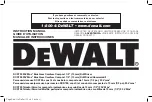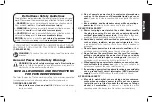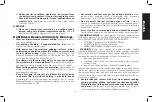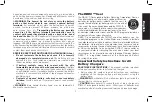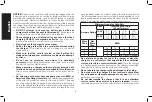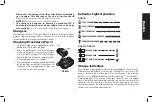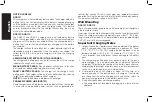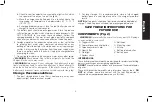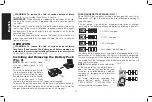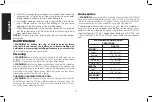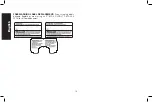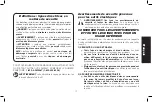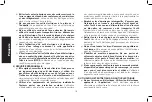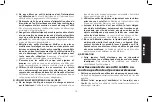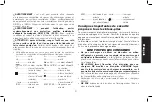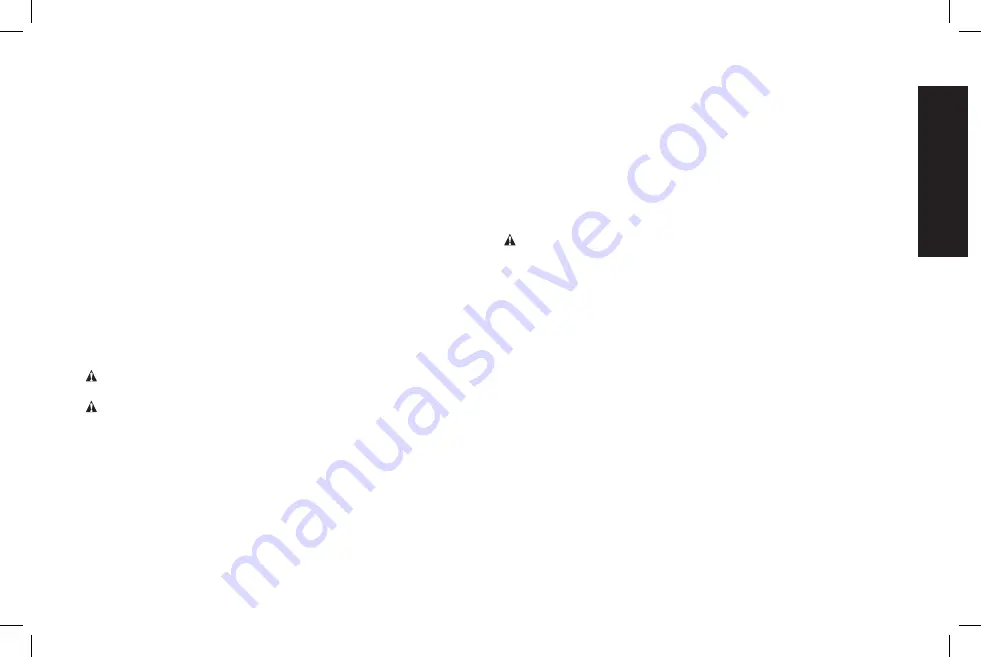
b. Check to see if receptacle is connected to a light switch which
turns power off when you turn out the lights;
c. Move the charger and battery pack to a location where the
surrounding air temperature is approximately 65 °F – 75 °F
(18° – 24 °C);
d. If charging problems persist, take the tool, battery pack and
charger to your local service center.
5. The battery pack should be recharged when it fails to produce
sufficient power on jobs which were easily done previously. DO
NOT CONTINUE to use under these conditions. Follow the
charging procedure. You may also charge a partially used pack
whenever you desire with no adverse effect on the battery pack.
6. Foreign materials of a conductive nature such as, but not limited
to, grinding dust, metal chips, steel wool, aluminum foil, or any
buildup of metallic particles should be kept away from charger
cavities. Always unplug the charger from the power supply when
there is no battery pack in the cavity. Unplug the charger before
attempting to clean.
7. Do not freeze or immerse the charger in water or any other liquid.
WARNING:
Shock hazard. Don’t allow any liquid to get inside the
charger. Electric shock may result.
WARNING:
Burn hazard. Do not submerge the battery pack in any
liquid or allow any liquid to enter the battery pack. Never attempt to
open the battery pack for any reason. If the plastic housing of the
battery pack breaks or cracks, return to a service center for recycling.
Storage Recommendations
1. The best storage place is one that is cool and dry, away from
direct sunlight and excess heat or cold.
2. For long storage, it is recommended to store a fully charged
battery pack in a cool dry place out of the charger for optimal
results.
NOTE:
Battery packs should not be stored completely depleted of
charge. The battery pack will need to be recharged before use.
SAVE THESE INSTRUCTIONS FOR
FUTURE USE
COMPONENTS (Fig. 2)
WARNING:
Never modify the power tool or any part of it. Damage
or personal injury could result.
A. Trigger switch
G. Belt hook
B. Forward/reverse control button
H. Mounting screw
C. Torque adjustment collar
I. Bit clip
D. Gear shifter
J. Battery release button
E. Worklight
K. Battery pack
F. Keyless chuck
INTENDED USE
These drills/drivers/hammerdrills are designed for professional drilling,
percussion drilling and screwdriving applications.
DO NOT
use under wet conditions or in presence of flammable liquids
or gases.
These drills/drivers/hammerdrills are professional power tools.
DO
NOT
let children come into contact with the tool. Supervision is
required when inexperienced operators use this tool.
English
9

